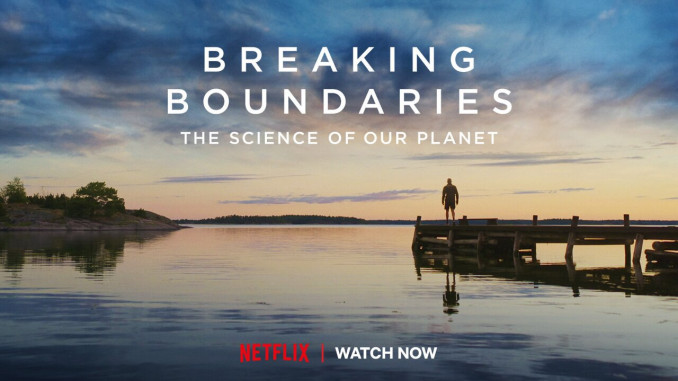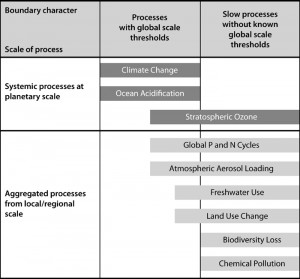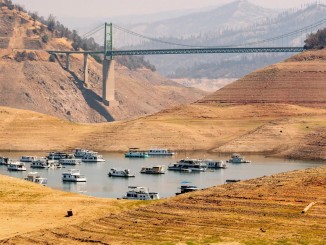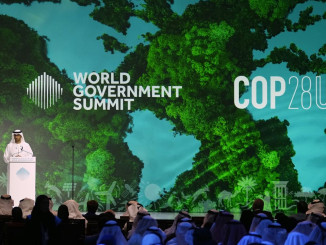
“Breaking Boundaries” is a new documentary on Netflix by David Attenborough. It’s based on research by Swedish scientist Johan Rockström, among others, into the state of the environment. This documentary is not an easy watch. But it is certainly worth it for those of us who are curious enough to learn, and brave enough to open our eyes to what is happening. Check out the trailer here!
In true Attenborough fashion, the legendary narrator of nature documentaries engages the viewer in a fascinating expose of what is happening to our planet. The film includes beautiful shots, jaw-dropping footage, emotionally charged close-ups, terrifying film of extreme weather events, and heart-breaking revelations. All the while, the viewer learns about Rockström’s research into planetary boundaries. The underlying idea of these boundaries is that although the Earth is complex, there are identifiable systems that must function in a certain way to keep the planet stable. Boundary systems include the pH of the ocean, freshwater use, air pollution, and more (see fig. 4 below). These boundaries have started to break down for a while now, which is undermining the ability of the planet to maintain an environment where life as we know it can exist.
Researchers not only worked to identify these categories, but also analyzed to what degree human activities are approaching so-called “tipping points” within them. The idea of a tipping point is that once a certain environmental threshold has been reached or passed (such as amount of carbon dioxide in the atmosphere), there are feedback loops which make certain effects irreversible, regardless of what humanity does to try and “fix” things.
One well-known example of this is how ice sheets provide a sort of mirror for incoming solar radiation, causing this energy to get reflected back into space. As global temperatures rise due to greenhouse gases in the atmosphere, ice sheets melt, reducing this effect. This in turn ensures that less radiation leaves the planet, and more radiation and energy stays trapped within the atmosphere. This further warms the planet and continues melting the ice sheets, in a cycle that ends only when all the ice is gone.
Rockström’s research on planetary boundaries looks at planetary tipping points, trying to figure out how close we are to the breakdown of the planet’s life supporting systems. And though we won’t go into detail, suffice it to say that the situation is dire.
While this film is both moving and informative, it also has its shortcomings. The solutions presented don’t challenge the real cause of the climate crisis: the system of capitalism that functions by exploiting the planet and the people on it. Nor does it acknowledge that capitalist society is incapable of doing what is necessary to stop its march off the cliff. The recommended actions, such as planting more trees, changing what you eat, and saying “no” to waste, are not enough, or even possible, in our current society. Individual solutions cannot fix a systemic problem.
After all, it doesn’t matter how many trees we plant, if deforestation does not stop. While not eating meat has positive environmental impacts, not everyone has a say in their diet, especially the billions facing food insecurity. And saying “no” to waste is fine for somebody who has time to sort out their recycling and shop at certain grocery stores, but the vast majority of working people don’t have the time, energy, or money. The problem lies not with individual consumer choices, but with the system of capitalism that gives most people no choice on how to live to begin with.
No, the real and only solution for saving our planet is a revolutionary movement of poor, oppressed, and working people, refusing to allow this destruction to continue. If we are to have any future, this dictatorship of the rich has to be overthrown, and society’s resources and wealth have to be taken back by those hands who created it and those who do the work: the working class. If we let this capitalist society continue, we can only expect the ruling class to run the planet into the ground; their pockets growing fuller as they enrich themselves off the corpses of all living things.
Attenborough finishes with an interesting statement: the world is more connected than ever through the internet. With more knowledge being spread globally, humanity has the ability to give the world a consciousness. By knowing what is needed, we can do what is necessary.
This is a good point to leave at. Humanity can be fully conscious of its relationship to the planet on a global scale. In fact, it’s in our interest to understand humans’ impact on the world. As the movie lays out, without healthy Earth systems, the conditions for life, human and otherwise, will not exist.
If we were to build a new society, unshackled by the profit motive and guided by what conditions are necessary for humans and our environment to flourish, we could truly give the world a consciousness. We could adjust and calibrate human activity not to dominate or destroy, but to play the role of steward of the natural environment. We could work to protect all life on this planet, and help all species and individuals attain their highest potential.





